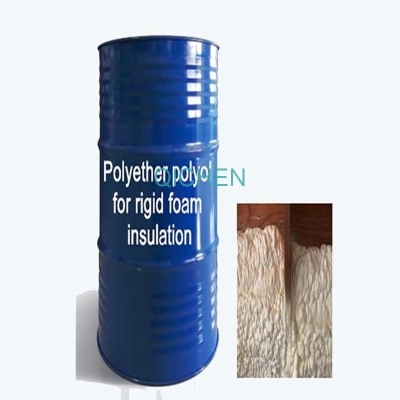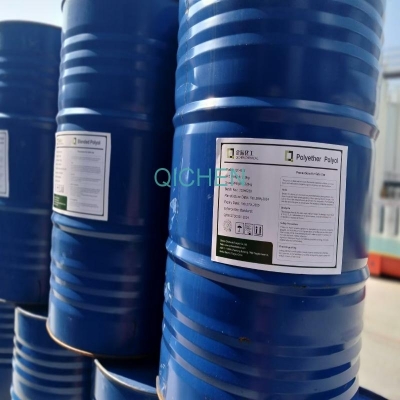-
Categories
-
Pharmaceutical Intermediates
-
Active Pharmaceutical Ingredients
-
Food Additives
- Industrial Coatings
- Agrochemicals
- Dyes and Pigments
- Surfactant
- Flavors and Fragrances
- Chemical Reagents
- Catalyst and Auxiliary
- Natural Products
- Inorganic Chemistry
-
Organic Chemistry
-
Biochemical Engineering
- Analytical Chemistry
-
Cosmetic Ingredient
- Water Treatment Chemical
-
Pharmaceutical Intermediates
Promotion
ECHEMI Mall
Wholesale
Weekly Price
Exhibition
News
-
Trade Service
4.
2.
5.
2 Study on modification of TiO 2
The main disadvantages of TiO 2 photocatalyst are as follows: First, the carrier recombination rate is high, and the quantum efficiency is low; second, the light absorption wavelength range is narrow, the absorption wavelength threshold is mostly in the ultraviolet region, and the sunlight utilization rate is low (only 3 %~5%)
.
Therefore, the modification of TiO 2 mainly starts from the following two aspects
① Add a capture agent or use photoelectric catalytic means to prevent the recombination of e - and h + and improve the photocatalytic efficiency of TiO 2
.
E.
②Reduce the band gap of TiO 2 and increase its absorption wavelength to make full use of sunlight
.
For example, semiconductor surface photosensitization, semiconductor recombination, etc.
(1) Precious metal (inert metal) deposition In the current research, the most common inert metal is Group VII Pt, followed by Ag, Ir, Ru, Pd and so on
.
Depositing an appropriate amount of noble metal on the surface of TiO 2 will cause the redistribution of carriers, thus avoiding the recombination of electron-hole pairs, effectively separating the carriers, and ultimately improving the light quantum efficiency of the photocatalyst
A large number of research results have confirmed that the doping of precious metals can cause electrons to migrate to the metal after excitation, thereby inhibiting the combination of electrons and holes, and greatly improving the photocatalytic activity
.
For example platinum on titania study Photocatalytic degradation of dyes in brilliant red 3B show: in Ti02 2 on the surface of a suitable amount of supported platinum metal, since the metal electron-rich platinum, reduced Ti02 2 concentration of surface electrons, Therefore, the recombination of electrons and holes is reduced, the number of holes on the surface of the catalyst is increased, and the catalytic effect of the catalyst is enhanced
(2) Oxidant, metal ion or non-metal ion doping.
Since the photocatalytic reaction is a pair of redox reactions, changing the rate of any one half reaction will affect the rate of the other half reaction.
In fact, in general photocatalysis In the reaction, the capture agent of photo-generated electrons is mainly oxygen adsorbed on the surface of the catalyst, and the reduction reaction of oxygen often becomes the rate-controlling step of the photocatalytic reaction
.
Therefore, in theory, adding any substance that is easier to reduce than oxygen in the solution will increase the oxidative degradation reaction rate
In addition, adding some metal ion oxidants, such as Cu 2+ , Fe 3+ , Ag +, etc.
can also increase the photocatalytic reaction rate.
Because doping with metal ions can change the crystallinity of the catalyst, and metal ions are effective electron acceptors.
It can capture electrons in the conduction band, which greatly reduces the probability of simple recombination of photo-induced electrons and photo-induced holes on the TiO 2 surface
.
Recent studies have shown that the use of ion implantation to dope TiO 2 with chromium and vanadium plasma can expand the wavelength range of the excitation light to the visible light region (moving to around 600nm)
The doping of non-metals (such as N, S, C) in semiconductors also affects the photocatalytic activity of semiconductors
.
After non-metallic doping, the 2p orbital of O and the p-orbital whose energy level is close to that of non-metallic hybridization will increase the valence band and reduce the band gap, broaden the absorption spectrum, which can absorb a part of it.
(3) Ultrasonic-assisted TiO 2 photocatalytic oxidation studies have shown that carriers are very easy to recombine during the photocatalytic reaction, which reduces the quantum yield of radical groups such as ·OH with strong oxidizing properties, thereby reducing the photocatalytic reaction.
In addition, in the photocatalytic degradation process, the surface of the catalyst will adsorb pollutant molecules, which will affect the light irradiation
.
Therefore, delaying carrier recombination, increasing the yield of free radicals such as ·OH, and reducing the adsorption of pollutants on the catalyst surface are extremely important ways to improve photocatalytic activity
.
Applying ultrasound to photocatalysis to solve the above problems is one of the research hotspots in recent years
.
Studies have shown that the use of ultrasound-assisted methods can improve the performance of the photocatalytic reaction
.
Ultrasonic assistance, starting from the wave-particle duality of photogenerated carriers, introduces an additional external energy field into the reaction system.
The external energy field is coupled and superimposed with the ultraviolet light effect and directly acts on the semiconductor photocatalyst to promote the generation of photogenerated carriers.
Extend its life, thereby increasing the quantum efficiency of the catalyst
.
Ultrasonic-assisted photocatalytic reaction is manifested in that it is a kind of excitation and activation energy source, which mainly comes from the ultrasonic cavitation effect and the physical and chemical changes induced by it
.
On the one hand, when ultrasonic cavitation occurs, a large number of tiny bubbles are formed in a very short time.
The generated bubbles instantly collapse and release energy, resulting in local instantaneous high temperature, high pressure and high-speed rushing.
These extreme conditions lead to oxygen molecules in the solution.
The breakage of the chemical bond with water molecules forms strong oxidizing free radicals such as ·H and ·OH, which in turn contributes to the increase of the concentration of ·OH, thereby improving the degradation efficiency of organic pollutants in water; on the other hand, ultrasound The mechanical effects (particle vibration, acceleration, and isomechanical quantities) produced by radiation can accelerate the separation of degradation products from the catalyst surface, so that more deactivation sites are regenerated, thereby increasing the activity and service life of the catalyst
.
(4) The compound semiconductor semiconductor coupling is to connect two different semiconductor particles to form a sandwich structure semiconductor colloid.
According to the different properties of the semiconductor compound components, it can be divided into a compound of a semiconductor and an insulator and a compound of a semiconductor and a semiconductor
.
It is essentially a modification of one kind of particle to another kind of particle
.
The coupling of semiconductors can expand the corresponding range of the TiO 2 spectrum, and use semiconductors such as sulfides and selenides with a narrow energy gap to modify TiO 2 , which improves the catalytic activity due to the mixed crystal effect
.
For example, the coupling of CdS, CdSe, etc.
with TiO 2 can improve the visible light photocatalytic activity of TiO 2
.
The current composite catalysts are mostly semiconductors and semiconductors
.
The light activity of this type of compound semiconductor is higher than that of a single semiconductor
.
The reason for this increase in activity is the difference between the conduction band and valence band of semiconductors with different properties, so that photogenerated electrons gather in the conduction band of one semiconductor, and holes gather in the valence band of another semiconductor, causing photogenerated carriers.
It is fully separated, which greatly improves the efficiency of photolysis
.
If a semiconductor with a smaller band gap is used to recombine with TiO 2 , the absorption spectrum of the catalyst may be expanded.
For example , the band gap of Fe 2 O 3 is 2.
2 eV, and its maximum absorption wavelength can reach 563 nm
.
There are many types of composite systems.
In the development of such composite semiconductor catalysts, in addition to the preparation method, attention should be paid to the ratio of various semiconductor components.
Different component ratios have a greater impact on photocatalysis
.
The combination of a semiconductor and an insulator is to load the semiconductor on a suitable carrier, and the carrier functions as a reaction bed
.
At this time, the insulator is mainly used as a carrier to increase the adsorption performance.
This type of catalyst usually has a large specific surface area and a porous structure, and is easy to adsorb organic matter
.
For example, the catalyst is made into a composite catalyst with adsorbents such as activated carbon or zeolite to improve the catalytic oxidation performance of the catalyst
.
The increase in degradation rate is directly proportional to the adsorption capacity of the adsorbent
.
(5) The most effective dye photosensitization TiO 2 photocatalyst can only absorb ultraviolet light less than 386nm, and the utilization rate of sunlight is low
.
Photosensitization is one of the main ways to extend the excitation wavelength range of TiO 2 and improve the photon utilization rate of long-wave radiation
.
The so-called dye photosensitization is to adsorb some photoactive compounds, such as chlorophyll, eosin, rose bengal and other dyes on the surface of semiconductors
.
Under visible light irradiation, these substances are excited, and their electrons are injected into the semiconductor conduction band, resulting in a negative shift of the semiconductor conduction band potential, thereby expanding the semiconductor excitation wavelength range and improving the utilization of long-wavelength light energy
.
The choice of sensitizer must meet two conditions: one is that the sensitizer must be easily adsorbed on the semiconductor surface and has good stability; the other is that the excited state energy level of the sensitizer is more negative than the conduction band of TiO 2 and can absorb sunlight The corresponding wavelength
.
These photoactive substances (sensitizers) have a large excitation factor under visible light.
As long as the excited state potential of the active substance is more negative than the conduction band potential of the semiconductor, it is possible to transport photogenerated electrons to the conduction band of the semiconductor material, thereby expanding the excitation wavelength Range
.
At present, the sensitization of dyes is mainly used in the development of solar cells and the photocatalytic decomposition of water to produce hydrogen
.
There are few reports on the photocatalytic degradation of organic pollutants .
The literature reported that the use of visible light can directly photodegrade textile azo dyes on TiO 2.
The reason is that the principle of photosensitization is used.
The azo dyes absorb visible light and then inject electrons into the conduction band of TiO 2 to generate dye free radicals.
Under the action, degradation occurs after a series of reactions
.
Others have synthesized TiO 2 nanotubes using surfactants as templates and applied them to dye-sensitized batteries.
They found that they are compatible with P25 type TiO 2 nanotubes.
Compared with nanoparticles, using TiO 2 nanotubes as electrodes has a higher short-circuit cycle photocurrent density and solar energy conversion efficiency
.
People have done a lot of work in catalyst photosensitization, but they still face the problem of low photoelectric conversion efficiency.
In addition, the absorption spectrum of most sensitizers does not match the solar spectrum well, and there are sensitizers and pollutants.
Competitive adsorption.
In addition, due to the adsorption-desorption equilibrium of the photosensitizer on the surface of the semiconductor material, or irreversible reactions, the photosensitizer is easily lost from the surface of the catalyst, and the sensitizer needs to be continuously added, which makes the operation of the process more difficult.
The phenomenon will inevitably lead to a decrease in photosensitization ability, and it will also cause secondary pollution when used for the removal of pollutants in water
.
Therefore, it is necessary to find a more suitable sensitization method to improve the reaction efficiency of photocatalysis
.







